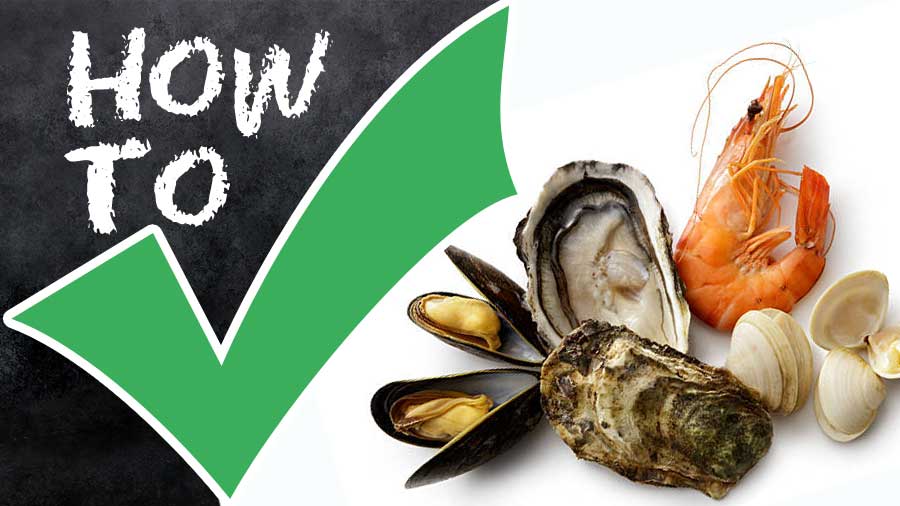Shellfish can be divided into two groups: crustaceans and molluscs. Crustaceans (prawns, lobsters and crabs) have an external skeleton that forms a shell. Molluscs (oysters, scallops, mussels, clams and octopuses) are invertebrates and are usually protected by a hard shell.
How to select shellfish
Crustaceans should have an intact shell, no discoloration around the joints and a pleasant sea smell. Prawns should have no discoloration around the head. Whole lobsters and crabs should have a good, heavy weight for their size. They should be on ice and not sitting in water. Molluscs such as oysters, mussels and pipis should be tightly closed in their shells, although pipis open and close regularly. It is easier to buy oysters that are already shucked or opened.
They should be plump with a natural creamy color and clear liquid. They should also be shiny and free from any shell pieces. Mussels sold as live should be tightly closed in their shells. If they are open, the mussel is dead. Scallops should have a creamy white-colored meat, free from brown marking, with the roe intact. Small octopuses are the best for cooking. Look for firm flesh with a pleasant sea smell.
How to store shellfish
Keep live crustaceans in a damp hessian bag in a cool place for 2 days. Prepared crustaceans should be wrapped in foil or stored in an airtight container for up to 2 days in the refrigerator.
Keep live molluscs in a damp hessian bag in a cool place for up to 2 days. Clean octopuses before storing them in the refrigerator for up to 2 days. Shucked oysters should be kept on crushed ice in the refrigerator and covered with plastic wrap for up to 2 days. All other molluscs should be stored in an airtight container in the refrigerator for up to 2 days.

